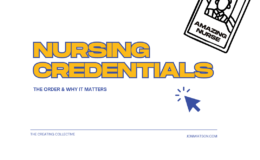The Article: Vardaman, J. M., Cornell, P., Gondo, M. B., Amis, J. M., Townsend-Gervis, M., & Thetford, C. (2012). Beyond communication: The role of standardized protocols in a changing health care environment. Health Care Management Review, 37(1): 88-97.
Big Idea: Hospitals across the U.S. are adopting the SBAR (situation – background – assessment – recommendation) protocol, which was first created by the U.S. Navy, so nurses and physicians “speak the same language” during acute care situations. This qualitative study examined a whopping 80 interviews with nurses, physicians, and nurse managers across four floors from two different hospitals to examine the additional outcomes implementing SBAR may have within a system.
Survey Says!: Researchers found SBAR was not only viewed as a high-reliability communication tool to reduce errors, but interviews revealed SBAR aided in: “schema formation, development of legitimacy, development of social capital, and the reinforcement of dominant logics” (p. 92). Schema formation relates to patterns and intuition nurses have within their practice to care for patients. It is a way to take in a lot of data and rapidly examine and apply it. (Sounds deep, huh?) Development of social capital describes the rapport, trust, and confidence built between professionals during SBAR communication. Development of legitimacy relates to professionals feeling as though SBAR provides all the information needed at once, and reinforcement of dominant logics explains professionals’ view of everything moving towards standardization.
Quotable: “The causes and characteristics of communication errors in health care are myriad and complex (Manning, 2006; Sutcliffe et al., 2004), with the situation often complicated by hierarchical, gender, and ethnic differences, especially in communication between nurses and physicians (Haig, Sutton, & Whittington, 2006; Monroe, 2006). Nurse-physician communication is further impeded by differences in training and reporting expectations (Thomas, Bertram, & Johnson, 2009)” (p. 89).
“As SBAR and similar protocols diffuse throughout the field, future research might consider the value of SBAR for other health care practitioners, including technicians, orderlies, social workers, and administrators. It seems likely that our findings regarding SBAR’s effect on schema formation, developing social capital, and bestowing legitimacy to new employees will be transferable to other functional areas beyond nursing” (p. 96).
So What? SBAR is quite common. Not only does it have the opportunity to reduce errors, but it may also have other impacts within health care systems and among professionals, such as these researchers identified. If you’re unfamiliar with SBAR, this is an excellent article to learn more. Health care, in general, is becoming more standardized, and SBAR is only one of the many standardizations.






Rob Fraser MN RN
February 24, 2012 2:35 pmSBAR is one of my favourite tools in the simulation lab. It is always fun to play the annoyed attending physician or NP that picks up the phone and a student is not ready yet. Great to learn the research backs up what I thought from my perspective.
Best,
Rob